[2024] [2023]
hey, I’m Ashok.
24.04.24
- strikethrough text in latex using:
\usepackage{soul} \st{Strike through this text}
22.04.24
sshport forwarding:ssh -L 8080:localhost:8080 user@remotehostforwards the remote port8080to the local port8080.
20.04.24
- sparse rewards lead to unstable training, whereas dense rewards lead to faster convergence.
- sparse rewards are more realistic but harder to learn.
- reward shaping through imitation learning can help in learning sparse rewards.
19.04.24
- jumanji
connector-v2environment does not guarantee solvability. - get the version of ubuntu using
lsb_release -a. - installing
nleusing pip can be a chore since the error messages are not helpful. steps to install on ubuntu22.04:sudo apt-get install -y build-essential autoconf libtool \ pkg-config python3-dev python3-pip python3-numpy git \ flex bison libbz2-dev wget -O - https://apt.kitware.com/keys/kitware-archive-latest.asc 2>/dev/null | sudo apt-key add - sudo apt-add-repository 'deb https://apt.kitware.com/ubuntu/ jammy main' sudo apt-get update && apt-get --allow-unauthenticated install -y \ cmake \ kitware-archive-keyring conda create -n py38 python=3.8 conda activate py38 pip install nle
18.04.24
xlais a compiler for machine learning models. It performs better on GPU and TPU.jaxusesxlaas a backend and has syntax similar tonumpy.mavais a marl library that usesjaxas a backend.
17.04.24
- in sb3,
batch_sizecan be changed forDQNandPPO. - what’s the right batch size to use?
16.04.24
-
sbxnow supports custom activation functions. resolved with PR#41. Now, it works withTD3,PPO,SAC,DDPGandDQN. -
policy specifies .
-
In on-policy, behaviour policy estimation policy, whereas, in off-policy, behaviour policy estimation policy.
PPOis on-policy andDQNis off-policy. -
Generally, on-policy is used for fast environments and off-policy is used for slow environments.
-
tmux:
- prefix key:
Ctrl-bby default. - New window:
<prefix>c - Next window:
<prefix>n - Previous window:
<prefix>p.
- prefix key:
-
tui file manager:
nnn.
15.04.24
-
sumo charging station on the road using:
<additional> <chargingStation chargeDelay="2" chargeInTransit="0" power="200000" efficiency="0.95" startPos="10" endPos="25" id="cS_2to19_0a" lane="2to19_0"/> </additional> -
dynamic time warping (DTW) (Berndt & Clifford 1994) is used to check the similarity between two time series.
-
change target vehicle color to red:
traci.vehicle.setColor(vehID, (255, 0, 0))
14.04.24
-
to get the color of the plotted line in matplotlib:
p = plt.plot(x,x, x,x*2, x,x*3) colors = [line.get_color() for line in p] -
default
plt.figsizeis (6.4, 4.8) inches.
13.04.24
-
multi-armed bandit is a simpler version of reinforcement learning, regret equation:
where,
- is the cumulative regret,
- is the number of time steps,
- is the optimal reward at each time step,
- is the reward at time step .
-
can multi-armed bandit perform better than reinforcement learning in some cases?
12.04.24
- spatio-temporal dataset:
pems08. ctrl-tabin vscode to switch between open files.- policy gradient is on-policy whereas q-learning is off-policy.
- equation for policy gradient:
which uses stochastic gradient ascent.
06.04.24
- pure param embeddings are randomly initialized and learned during training. they are not tied to any input token.
- cross attention with a pure param embedding is getting common.
05.04.24
pwnagotchiruns on rpi zero w and uses a wifi adapter to capture handshakes.- it uses rl to learn the best way to capture handshakes.
- what’s the bill-of-materials for a pwnagotchi?
04.04.24
- neovim distributions exist such as
lazyvimandspacevim. - they come with pre-installed plugins and configurations.
- lazygit is a terminal based git client with cool UI.
- lazydocker is a terminal based docker client with cool UI.
03.04.24
- rpi pico w has two cores.
- code for printing even numbers on
core0and odd numbers oncore1:
from time import sleep
import _thread
def core0_thread():
counter = 0
while True:
print(counter)
counter += 2
sleep(1)
def core1_thread():
counter = 1
while True:
print(counter)
counter += 2
sleep(1)
second_thread = _thread.start_new_thread(core1_thread, ())
core0_thread()02.04.24
- if importing both
torchandtensorflowin the same script, and you get an error:
F ./tensorflow/core/kernels/random_op_gpu.h:246] Non-OK-status: GpuLaunchKernel(FillPhiloxRandomKernelLaunch<Distribution>, num_blocks, block_size, 0, d.stream(), key, counter, gen, data, size, dist) status: Internal: invalid configuration argumentthen import tensorflow before torch.
sbxdoesn’t support custom activation functions yet. work in progress. link to github issue.
01.04.24
- tensorboard logs only 1000 steps by default to preserve memory but this results in exported csv files lacking data.
- To increase the number of steps in tensorboard logs, use
--samples_per_plugin=scalars=10000in thetensorboardcommand. - rgb smd led model:
KY-009. Working voltage: 2.8 for red, 3.2 for green, 3.2 for blue. Forward current: 20mA.
29.03.24
- setting up a new rpi pico w with micropython requires downloading the micropython firmware.
thonnyis the preferred editor. It is available in standard ubuntu repo.- if you get an error
Unable to connect to /dev/ttyACM0: [Errno 13] could not open port /dev/ttyACM0: [Errno 13] Permission denied: '/dev/ttyACM0'try,sudo usermod -a -G dialout <username>and then logout or reboot. thonnyin the ubuntu repos is kinda outdated and doesn’t have native support for pico w. download the latest using:
wget -O thonny-latest.sh https://thonny.org/installer-for-linux
chmod +x thonny-latest.sh
./thonny-latest.sh-
in
thonny, go to Run -> Interpreter -> Micropython (Raspberry Pi Pico) -> install or update micropython. -
hold the
BOOTSELbutton and then plug the micro-usb to get the mcu into filesystem mode. -
pico wcode for blinking on-board led is different frompicobecause its connected to a gpio on the wireless chip instead. -
code for blinking on-board led on
pico w:
import machine
led = machine.Pin("LED", machine.Pin.OUT)
led.off()
led.on()-
save the file as
main.pyon the pico w filesystem to make it run on boot. -
images:
- rpi pico gpio pins
- rpi pico in its packaging
- rpi pico alongside arduino for size comparison
- rpi pico led blink
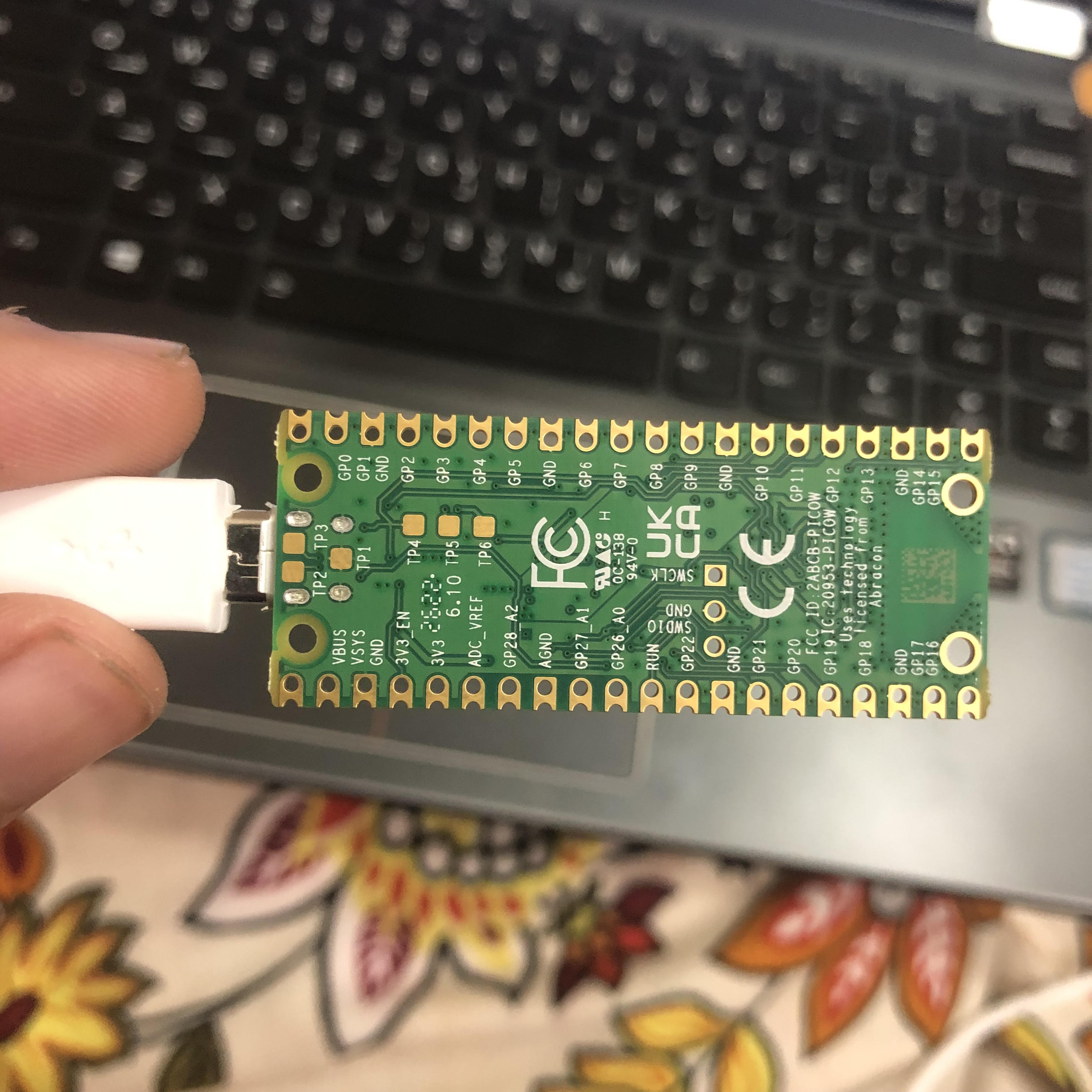
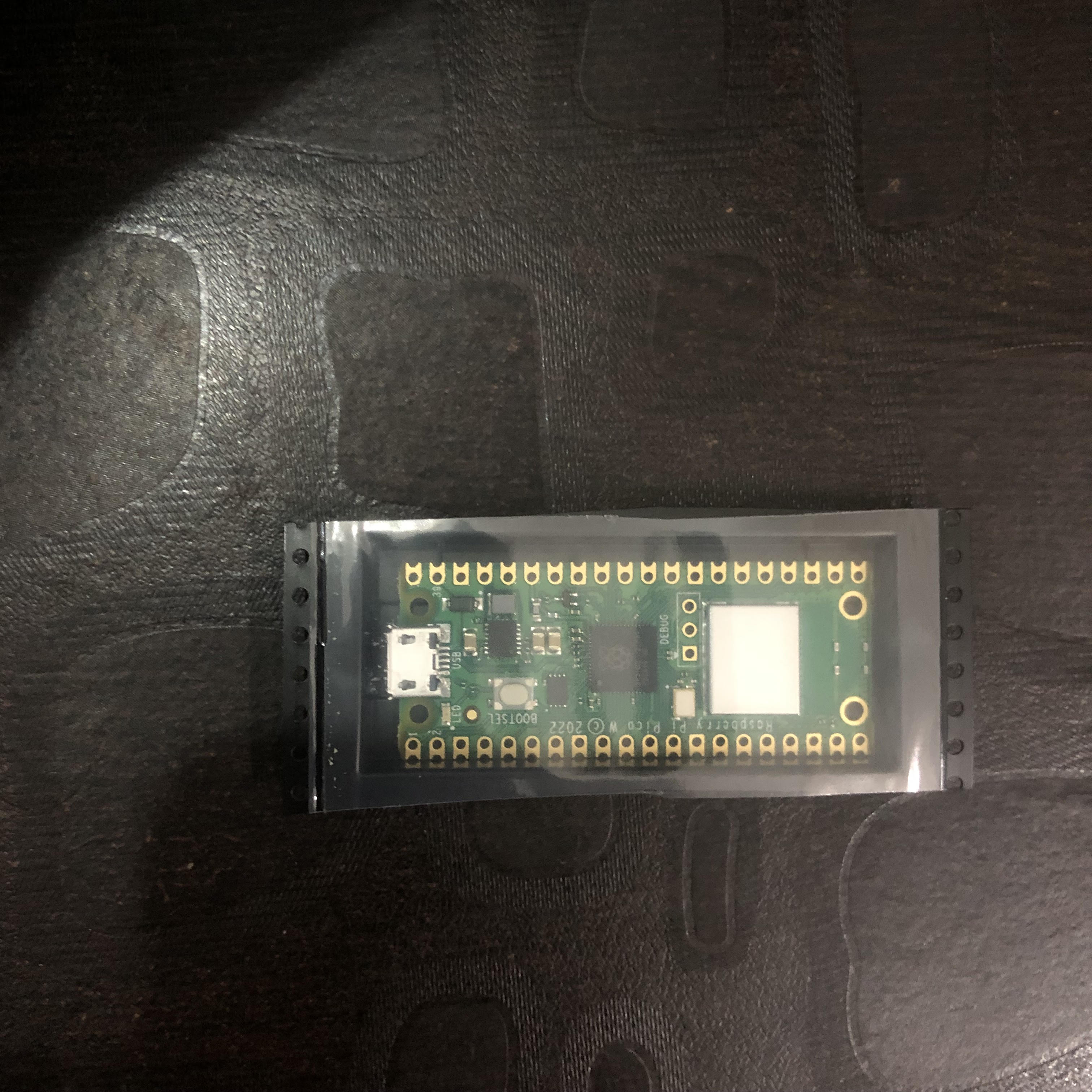
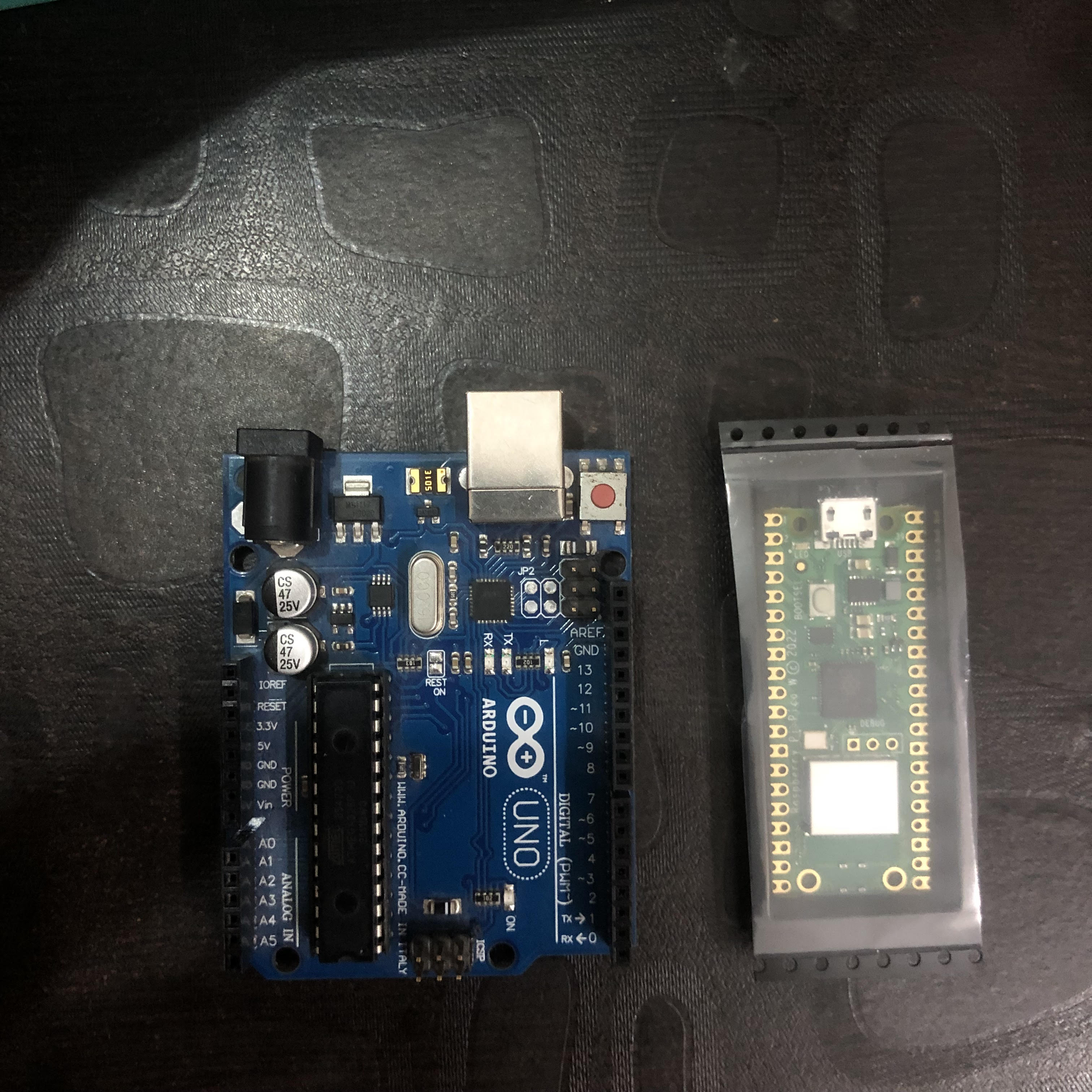
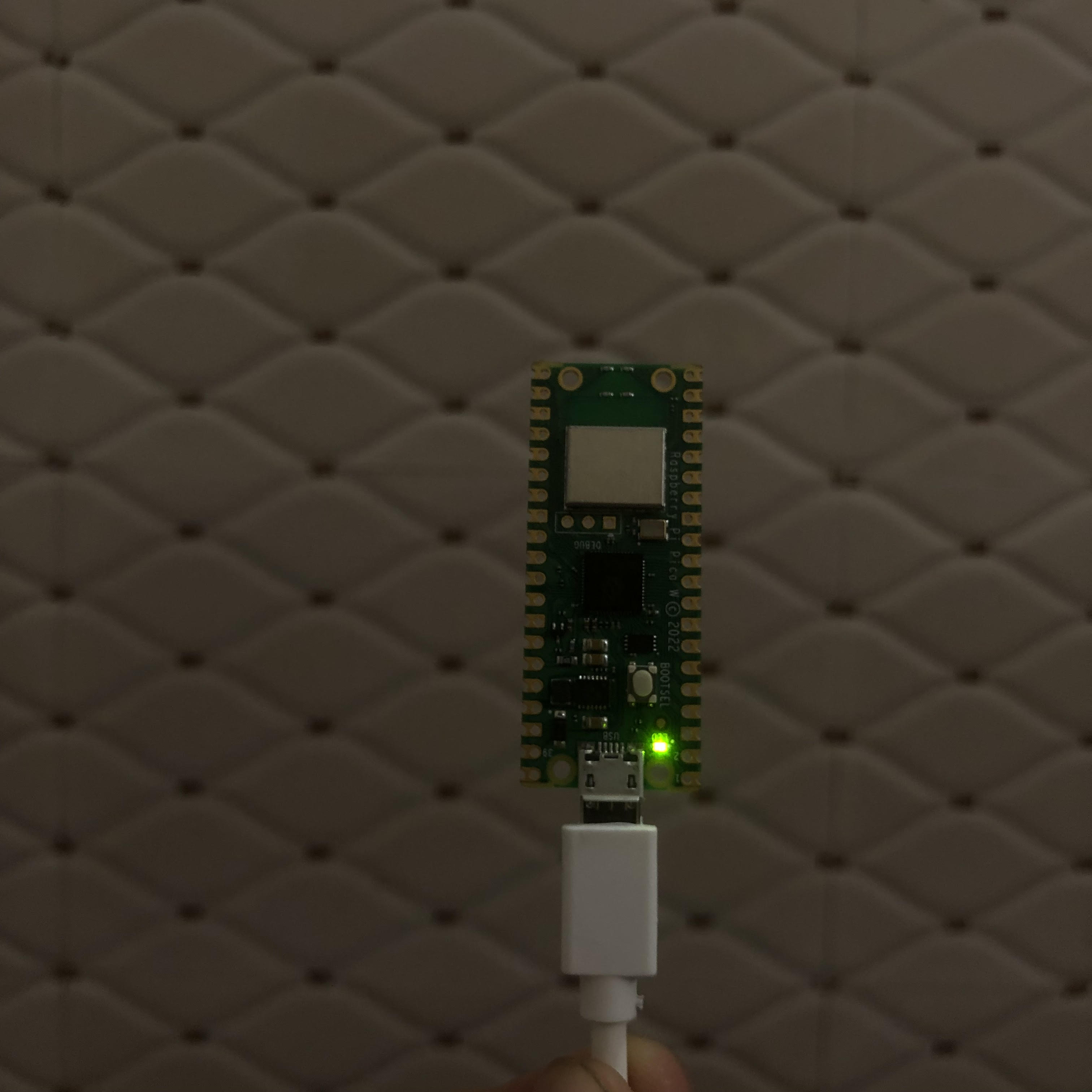
28.03.24
- overleaf docker container: github link.
- texstudio also works well,
sudo apt install texstudio.
27.03.24
- trajectory stitching involves piecing together parts of the different trajectories.
- it helps offline rl match the performance of online rl.
- sub-optimal algorithms can be stitched to perform better than them.
26.03.24
- in latex,
\include{}adds a new page, instead use\input{}. - embedded firmware just means the arduino code.
24.03.24
- rpi pico supports micropython and its only 6$. ¯\_(ツ)_/¯
- its also dual core so it can multi-task.
simplapackage in SUMO does not work withlibsumo.
23.03.24
STM32F103RBhas 128KB flash and 72MHz clock speed. It was about 14$.- micropython requires a minimum of 256KB flash.
- micro:bit v2 has 512KB flash, 128KB RAM, and 64MHz clock speed. It has nRF52 chip.
- micro:bit can be programmed using micropython.
- python access index using enumerate:
for index, element in enumerate(['a', 'b', 'c']):
print(index, element)22.03.24
- db9 is a serial port connector. db15 is a vga connector. T_T
21.03.24
- pdf on how to use rplidar on windows to scan the environment.
20.03.24
- nvim config is stored at
~/.config/nvim/init.vim. - minimal vim/nvim config:
syntax on
set tabstop=4
set shiftwidth=4
set expandtab
set autoindent
set number
set ruler- for error:
AttributeError: module 'tensorflow_probability' has no attribute 'substrates'useimport tensorflow_probability.substrates.jax as tfp. - Parse local TensorBoard data into pandas DataFrame
19.03.24
-
MAE loss is less sensitive to outliers.
-
MSE loss penalises large errors.
-
MAE is not differentiable whereas huber loss is better because its differentiable.
-
images:
- mae vs mse vs huber
- huber at different values of can become MSE or MAE.
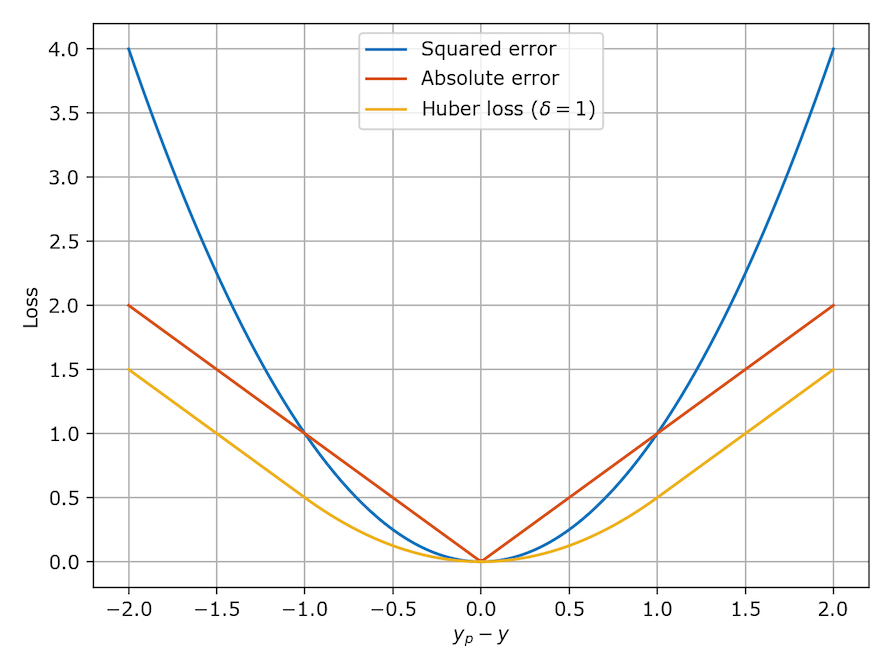
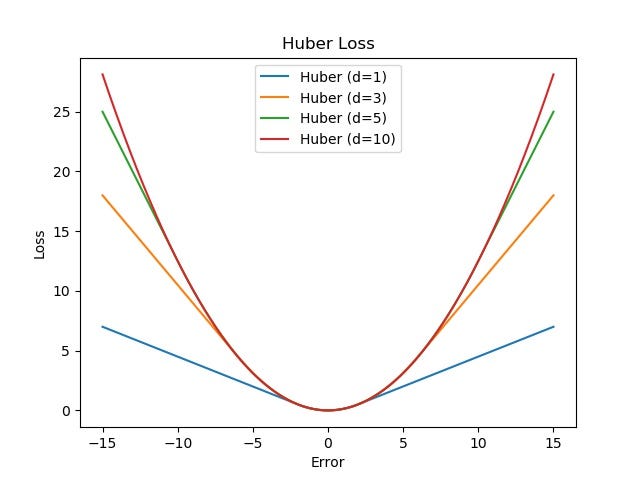
-
-
in vim, switch between splits: Ctrl-W + [hjkl].
-
and reload the current file using
:e. -
ai inference hardware is getting better. tenstorrent sells e150 for 75k inr (shipping included).
-
quantization reduces the size of the model and makes it less memory hungry.
18.03.24
- rpi pins max output is 3.3v.
- how to monitor the rpi temperature?
- is gpio cleanup necessary?
16.03.24
- gpio pin layout is actually this way:

-
5v to 3.3v converter: HW-122 (AMS1117-3.3).
-
the converter can be used for rpi to arduino serial communication.
15.03.24
- ring attention is useful for increasing the context size.
miniforgeworks better on raspberry pi.- pinout.xyz for pin layout.
13.03.24
- UART is a serial communication protocol.
- Enabling serial on RPi 4:
sudo raspi-configInterfacing Options>Serial>No>Yes- Reboot
- GPIO connections:
TXof RPi toRXof USB to TTLRXof RPi toTXof USB to TTLGNDof RPi toGNDof USB to TTL
minicomcan be used to access the serial console of RPi. (sudo apt install minicom)minicom -b 115200 -o -D /dev/ttyUSB0to start minicom with baud rate 115200 and device/dev/ttyUSB0- disable hardware flow control in minicom using
Ctrl+A>O>Serial port setup>F>No
12.03.24
- the notes belong to different categories, can I use a LLM to classify them without any labels? Each bullet point is a note and the category is the label.
- the categories could be:
-
Embedded
-
ML
-
GPU/Infra
-
Programming
-
Latex
-
Unlabelled
-
11.03.24
- to reduce matplotlib xticks:
num_xticks = 5 # Number of x-ticks to show
step = len(time_steps) // num_xticks
plt.xticks(time_steps[::step], rotation=45, fontsize=15) # Set x-axis ticks to show only selected time steps-
usb-c power delivery (pd) can deliver variable voltage and current using software negotiation.
-
power delivery trigger board can be used to negotiate power delivery and get a fixed voltage and current.
-
\usepackage{graphicx}and\usepackage{subcaption}for subfigures in latex.
10.03.24
- how to flash a blank
stm32f030f4p6chip? - blinking led is the hello world of embedded systems
- today’s commit deletes the old format files.
nvidia-driver-350is compatible withcuda-11.8.nvidia-driver-250is compatible withcuda-11.5.- to switch display driver from
nvidiatointel, usenvidia-prime:
sudo apt install nvidia-prime
sudo prime-select intel- install cuda 11.8:
wget https://developer.download.nvidia.com/compute/cuda/repos/cuda/11.8.0/local_installers/cuda_11.8.0_520.61.05_linux.run
sudo sh cuda_11.8.0_520.61.05_linux.runand update path using:
$ export PATH=/usr/local/cuda-8.0/bin${PATH:+:${PATH}}
$ export LD_LIBRARY_PATH=/usr/local/cuda-8.0/lib64\
{LD_LIBRARY_PATH:+:${LD_LIBRARY_PATH}}- when building cuda libraries using ninja if you get an error:
/usr/include/c++/11/bits/std_function.h:435:145: error: parameter packs not expanded with ‘...’:
435 | function(_Functor&& __f)
| ^
/usr/include/c++/11/bits/std_function.h:435:145: note: ‘_ArgTypes’
/usr/include/c++/11/bits/std_function.h:530:146: error: parameter packs not expanded with ‘...’:
530 | operator=(_Functor&& __f)
| ^
/usr/include/c++/11/bits/std_function.h:530:146: note: ‘_ArgTypes’then install gcc-10 and g++-10:
sudo apt install gcc-10 g++-10
sudo update-alternatives --install /usr/bin/gcc gcc /usr/bin/gcc-10 10
sudo update-alternatives --install /usr/bin/g++ g++ /usr/bin/g++-10 10and update version:
Ubuntu 22.04.1 LTS
Cuda compilation tools, release 11.8, V11.8.89
gcc (Ubuntu 11.3.0-1ubuntu1~22.04) 11.3.0
g++ (Ubuntu 9.5.0-1ubuntu1~22.04) 11.3.0-
bash_aliasesis a file to store aliases for bash commands such asexport PATHandexport LD_LIBRARY_PATH. -
To install pytorch with cuda support:
conda install pytorch=*=*cuda* cudatoolkit -c pytorch09.03.24
- there’s no desktop ARM processors.
- a usb to ttl converter
pl2303hxcan be used to access the serial console of a raspberry pi. - ssh gives virtual console whereas serial console gives physical console.
- serial console doesn’t require wifi or hdmi.
armis alsorisc.
08.03.24
- embedded languages: c, c++, rust
- rust can run bare metal on raspberry pi using
no_stdandno_maincrate-level attributes - bare metal can be used to run code without an operating system
07.03.24
- lora is duplex by default. It can send and receive at the same time.
- analog pins on arduino can be used as digital pins too.
- arduino D0 and D1 pins although set aside for TX and RX can also be used as digital pins.
05.03.24
- nvidia display driver is different from nvidia cuda driver.
- cuda version in
nvidia-smiis not the installed version. nvcc --versiongives the installed cuda version.
04.03.24
- neo6m gps module connects to the satellite and gives the location in NMEA format.
- it has a cold start time of 27s and a hot start time of 1s. on my desk, it took 2-5 minutes to get a fix.
- once fixed, it saves it to the eeprom and can be retrieved on the next boot.
- the eepron battery is a coin cell.
03.03.24
einsumis cool. It uses the Einstein summation convention to perform matrix operation.torch.einsum('ij,jk->ik', a, b)is equivalent totorch.matmul(a, b)- its drawbacks are that its not optimized on gpu (yet). Also doesn’t allow brackets in the expression.
>>> a = torch.rand(3, 5)
>>> a
tensor([[0.7912, 0.6213, 0.6479, 0.2060, 0.9857],
[0.9950, 0.7826, 0.6850, 0.6712, 0.0524],
[0.4367, 0.8872, 0.9622, 0.0159, 0.4960]])
>>> b = torch.rand(5, 3)
>>> b
tensor([[0.4560, 0.9680, 0.1179],
[0.9072, 0.8982, 0.2926],
[0.5526, 0.2779, 0.5810],
[0.4366, 0.8061, 0.0065],
[0.4744, 0.6915, 0.5326]])
>>> torch.einsum('ij,jk -> ik', a,b)
tensor([[1.8401, 2.3517, 1.1779],
[1.8601, 2.4338, 0.7766],
[1.7780, 1.8429, 1.1344]])
>>> torch.matmul(a, b)
tensor([[1.8401, 2.3517, 1.1779],
[1.8601, 2.4338, 0.7766],
[1.7780, 1.8429, 1.1344]])stm32f030f4p6as per the naming convention means:stm32is the family of microcontrollersfis the series = General purpose0is the core count = ARM Cortex-M030is the line numberfis the pin count = 204is the flash size = 16KBpis the package type = TSSOP6is the temperature range = -40 to 85 degree celsius
02.03.24
- The
stm32f030f4p6chip is SMD and in TSSOP-20 footprint. - I also bought SMD to THT adapters which are called
breakout boardsand soldered the chip to it. - STM32 nucleo boards come with a built-in st-link programmer and debugger.
images:
stm32f030f4p6soldered onto a breakout boardstm32f030f4p6with rpi v4 for scale


01.03.24
- v100s has 5120 cuda cores and 640 tensor cores
- quadro rtx 5000 has 3072 cuda cores and 384 tensor cores
- tensor cores are more important for deep learning than cuda cores
- installing miniconda:
# install miniconda
mkdir -p ~/miniconda3
wget https://repo.anaconda.com/miniconda/Miniconda3-latest-Linux-x86_64.sh -O ~/miniconda3/miniconda.sh
bash ~/miniconda3/miniconda.sh -b -u -p ~/miniconda3
rm -rf ~/miniconda3/miniconda.sh
~/miniconda3/bin/conda init bash
source ~/.bashrc- installing nvidia gpu drivers:
# install nvidia drivers
sudo apt update && sudo apt upgrade
sudo apt autoremove nvidia* --purge
ubuntu-drivers devices
sudo apt install nvidia-driver-525
sudo reboot
nvidia-smi
# install pytorch with cuda support
pip install torch torchvision torchaudio- ICs come in different packages: DIP, SOP, QFP, TQFP
29.02.24
- softmax suffers from numerical instability due to floating point precision error
>>> import torch
>>> m = torch.nn.Softmax(dim=1)
>>> a = torch.tensor([[ 0.4981e3, 0.5018, -0.7310]])
>>> m(a)
tensor([[1., 0., 0.]])- normalization is a way to solve numerical instability
>>> torch.nn.functional.normalize(a)
tensor([[ 1.0000, 0.0010, -0.0015]])
>>> m(torch.nn.functional.normalize(a))
tensor([[0.5762, 0.2122, 0.2117]])28.02.24
- color sensors (TCS34725, TCS3200) can detect intensity of R,G,B individually
- because of open source, risc v is cheaper than arm and runs linux too
- microcontroller (arduino, stm32) vs single board computer (raspberry pi, beaglebone)
- models perform better when data is gaussian
27.02.24
warmup_stephyperparameter lowers the learning rate for the first few steps and then increases it- transformer = encoder + decoder + attention
Kis the context window size in the attention mechanism which is the number of tokens that each token attends to.- attention in transformers has quadratic time complexity
- flash attention has linear time complexity
- An Attention Free Transformer also has linear time complexity
wandbcan be self-hosted too inside the docker container
26.02.24
- cpu architectures: x86, x86_64, arm, arm64, risc-v
- famous arm dev board: stm32
- risc-v is open source and is gaining popularity
- LuckFox Pico Plus RV1103 is a risc-v dev board with ethernet and can run linux
- softmax not summing to 1 T_T
- how to make LoRa full duplex?
25.02.24
- rl implementations: stable-baselines3
- cleanrl has single file implementations of rl algorithms
- tianshou is a pytorch based rl library
- Through Hole Technology (THT) vs Surface Mount Technology (SMT)
24.02.24
- Found this Machine Learning Theory Notes GDrive